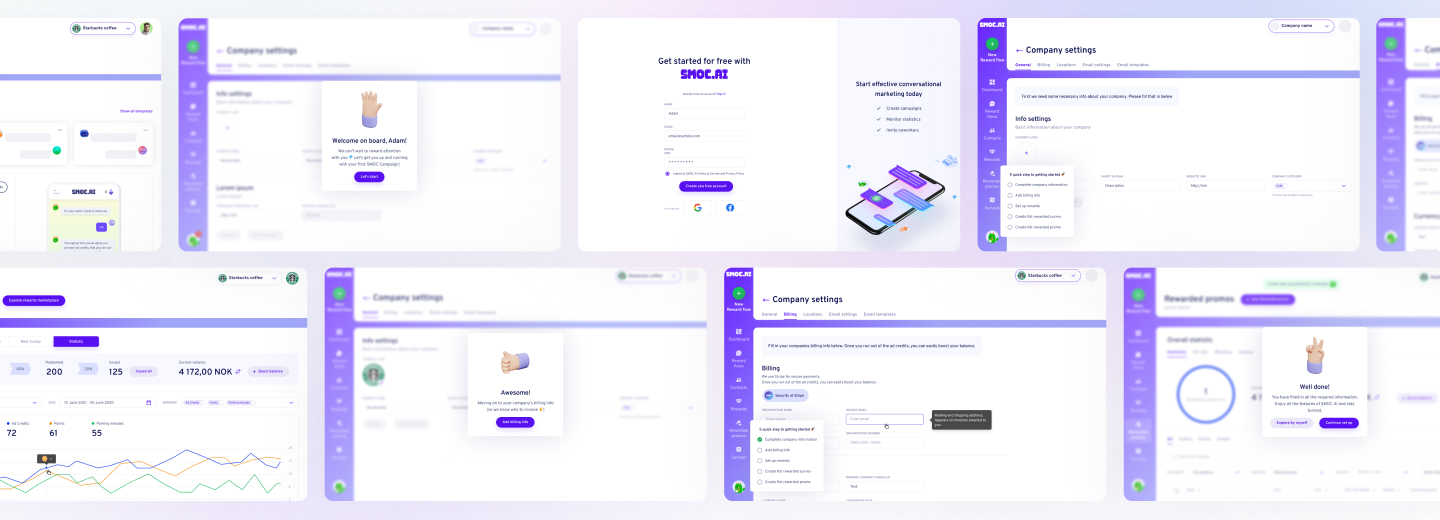As someone who has spent a decade analysing and shaping businesses from the ground up, I see this question from founders almost daily: Should I build my pitch deck or my business plan first? There’s no universal answer, but by unpacking the underlying purposes and practical real-world uses for each, it becomes much clearer how to sequence these powerful tools for your personal context as a founder or executive.
Let’s walk through the intellectual backbone of each format, highlight their differences, and help you pinpoint which one should take priority, using insights earned through years spent sitting on both sides of the table.
what’s in the article
- What Is a Pitch Deck?
- What Is a Business Plan?
- Pitch Deck vs. Business Plan: Key Differences
- When to Use a Pitch Deck First
- When a Business Plan Comes First
- Conclusion
What Is a Pitch Deck?
A pitch deck is a concise, visual summary of your startup’s story, market opportunity, and ambitions, almost always presented in slide format. It’s designed to generate excitement and prompt further conversation, typically with investors, but also with partners or key hires. Imagine it as the highlight reel for your company’s big-league prospects.
Purpose of a Pitch Deck
The goal of a pitch deck consulting is singular: spark curiosity and open doors. You’re not aiming to fully educate the audience at this stage. Instead, you’re offering compelling snapshots:
- What problem are you solving?
- Why you, and why now?
- How big can this really get?
- What’s your plan to reach those heights?
- How will their involvement (as an investor or partner) help make it happen?
What is a pitch deck in business? It’s the promotional face of your early-stage company — a way to communicate vision, value propositions, and traction quickly and visually. Throughout my startup consulting projects, I’ve seen the right pitch deck swing investor meetings from lukewarm to explosive interest in under 10 minutes.

Looking to Build an MVP without worries about strategy planning?
EVNE Developers is a dedicated software development team with a product mindset.
We’ll be happy to help you turn your idea into life and successfully monetize it.
What Is a Business Plan?
A business plan, on the other hand, is an expansive document that outlines every operational detail, assumption, and projection for your startup. Where a pitch deck courts attention, a business plan earns trust.
The answer to the frequent question, “are business plans text based documents?”— yes, business plans are text-based documents filled with exhaustive narrative, detailed market research, and rigorous financial forecasting.
Purpose of a Business Plan
The business plan’s primary function is to demonstrate a thoughtful, data-driven strategy for building (and scaling) a successful company. Investors, institutional lenders, and executive teams rely on this depth:
- Market analysis and research methods
- Organisational structure and personnel needs
- Product development roadmaps
- Go-to-market strategies
- Financial models (P&L, cash flow, balance sheets)
- Risk mitigation strategies
This document signals, “We’ve thought through the details. Here’s how we will execute.”
When a Business Plan Is Needed
While business plans were once mandatory at every early funding stage, the landscape has shifted. Today, they come into play at the following strategic moments you may try to yourself:
- Securing bank loans, funding programs or certain grants (these institutions still love old-school detail)
- Gaining approval from corporate or governmental partners for long-term interactions
- Charting expansion into new markets, especially if they are done internationally
- Laying out multi-year product development or M&A targets
Every serious founder eventually needs one, but usually after the initial “wow” moment created by a strong pitch deck.

Proving the Concept for FinTech Startup with a Smart Algorithm for Detecting Subscriptions

Scaling from Prototype into a User-Friendly and Conversational Marketing Platform
Pitch Deck vs. Business Plan: Key Differences
If you try to compare these two tools, you may find them as similar as a high-level trailer and a feature film. Both are necessary, but they serve fundamentally different roles and audiences.
Format: Slides vs. Text
A pitch deck is primarily a visual tool, typically consisting of 10-20 slides. It’s designed for live presentations or to be sent as a concise PDF. Its content focuses on graphics, charts, and short, impactful bullet points to quickly convey key information.
In contrast, a business plan is a text-based document, much more extensive at 25-100+ pages. It’s usually shared as a PDF, Word document, or printed file. This document dives into a detailed narrative, dense analysis, and often includes raw data to provide a comprehensive overview of the business.
It’s common to hear “deck business meaning” thrown around the startup ecosystem — it simply signals any presentation assembled in slide or deck format, not just fundraising materials.
Use Case: Pitching vs. Planning
Pitch decks shine in circumstances where founders need to inspire investors or key partners, often with the clock running. Business plans thrive in situations requiring in-depth analysis and operational clarity over months and years.
Length and Detail
A pitch deck aims for brevity — distilling insights into visual, punchy slides. There’s no room for granular sub-totals or 20-page appendices. Investors viewing a pitch deck expect to hear the broad strokes and your unique take.
Contrast that with a business plan’s deep-dive. This document breaks down line items, maps the competitive terrain, forecasts scenarios, and reviews milestones. It’s not unusual for appendices alone to surpass the length of a pitch deck.
Investor Expectations
At the seed stage, venture capitalists and angels expect a lean, visually engaging pitch deck first. If your slides hit the mark, some may request your full business plan as a follow-up step. Banks and government agencies, meanwhile, usually require the full business plan before calling a meeting.
Speed and Flexibility
Pitch decks are inherently quick to customize and revise. Tailor your story to a specific fund or partner, tweak the financial slide, update your product screenshots — then you’re ready for the next meeting.
Business plans take longer to draft and update, given the level of detail and supporting research involved. They’re often living documents, but not agile day-to-day.
When to Use a Pitch Deck First
There are several scenarios where starting with a pitch deck is both practical and psychologically smart.
Early-Stage Fundraising
When you’re seeking capital from VCs, angels, or family offices, time is often the enemy. Investors are pitched nonstop and only engage deeply with plans that initially capture their imagination.
Your pitch plan (or pitch deck) is the filter that gets you past the first gate. If you can’t tell your company’s story, prove your market, and articulate your edge in 15 slides, investors may never request the full business plan, no matter how sharp your operations.
Quick Investor Presentations
Speed to feedback matters more than perfection in the earliest days. I advise founders to “pressure test” their messaging; present dozens of pitch decks, gather questions, note objections, and then refine. This simulates the market’s response before you invest dozens of hours writing a business plan.
A great pitch deck can serve as your company’s elevator pitch at demo days, networking events, and investor coffee meetings. It’s the swiss army knife of business communication.
When a Business Plan Comes First
Some situations call for deep planning before any slides are built, and mostly that deals with strategic planning aimed at growth. Once a company passes the earliest stages and pursues complex expansion, outlining a rigorous, step-by-step business plan is essential. Such a shift may include a new international market, a new regulatory environment, or preparing for an acquisition.
If you need bank financing, government grants, or a partnership with conservative institutions, their gatekeepers will want the narrative, data, and contingencies. At this point, your business plan pitch deck can serve as the executive summary, but the plan itself does the heavy lifting.

Need Checking What Your Product Market is Able to Offer?
EVNE Developers is a dedicated software development team with a product mindset.
We’ll be happy to help you turn your idea into life and successfully monetize it.
Conclusion
Startups that scale often cycle between these two formats. The pitch deck opens doors and drives meetings. The business plan earns long-term trust and unlocks major deals, partnerships, or institutional capital after startup valuation.
Here’s how most experienced founders sequence their tools:
Early Stage
- Draft and iterate a pitch deck.
- Use it to tell your story, test the message, and attract interest.
- When an investor is serious or requests further information, share key business plan sections as needed.
Post-Validation
- Once there’s proven interest, devote resources to assembling a full business plan.
- Anchor major commitments (bank loans, expansions, grants) into a living business plan, refreshing quarterly or annually.
The right tool aligns with the business moment: presentations open doors, detailed documents close them.
In most cases, yes. The pitch deck is essential for making first impressions and strategic conversations, while the business plan is for large investments and satisfying regulatory bodies.
In high-growth companies, pitch decks should be revisited monthly with every key product launch, partnership, or shift in market. Business plans get a full review with each fundraising effort or major shift in the company, often annually.
Yes, by design. While charts, tables, and visuals enhance readability, the narrative detail, research, and strategy make business plans stand out as rich, qualitative and quantitative documents.

About author
Roman Bondarenko is the CEO of EVNE Developers. He is an expert in software development and technological entrepreneurship and has 10+years of experience in digital transformation consulting in Healthcare, FinTech, Supply Chain and Logistics.
Author | CEO EVNE Developers


















